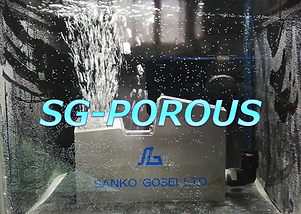Technical description of decorative molding: innovative technology that combines beauty and functionality.
- SANKO GOSEI
- Jan 20
- 3 min read
Technologies that integrate appearance and performance are essential for enhancing product design and functionality. Among these, the technology known as ‘decorative molding’ is attracting particular attention. This article details the basic technology, applications, benefits and challenges of decorative molding.
What is decorative molding?
Decorative molding is a generic term for technologies that add decoration or functionality to the surface of moulded parts. By integrating molding and decoration, it is possible to create products with beauty and high performance that would be difficult to achieve with conventional manufacturing methods.
Decorative molding includes the following major technologies
In-mold molding (IMD/IML)
Secondary decoration (e.g. pad printing and screen printing)
3D decoration (e.g. film insert molding)
Each of these technologies is described in more detail below.
Main decorative molding technologies
1 In-mold molding (IMD/IML)
In-mold decoration (IMD or IML) is an injection molding technology in which decorative films or labels are inserted into a mold.
Features and processes
Process:
Decorative film or label is placed in the mold.
Injection molding presses the film onto the surface of the molded product.
After molding, the product is completed with the film integrated.
Advantages:
Highly decorative: complex designs such as gradations and metallics can be achieved.
Durability: the printed layer is not exposed on the surface and is therefore resistant to abrasion and peeling.
Reduced processes: production efficiency is improved as molding and decoration can be carried out at the same time.
Applications: automotive interior panels, surface decoration of household appliances, etc.

2. secondary decoration (pad printing and screen printing)
Secondary decoration is a technique for decorating the surface of a component after molding.
Features and processes
Process:
Ink or decorative film is applied to the surface of the molded part.
Curing and coating processes are applied as required.
Main technologies:
Pad printing: printing technology suitable for small and complex shapes.
Screen printing: suitable for flat or gently curved surfaces.
Advantages:
Flexibility: can be used for a wide variety of designs.
Small-lot production: design changes can be made relatively easily.
Applications: control panels on household appliances, toy designs, logos on electronic devices, etc.

3. 3D decoration (e.g. film insert moulding)
3D decoration is a technology for applying high-precision decoration to three-dimensional products.
Features and processes
Process:
Decorative film is formed into three-dimensional shapes (vacuum or pressure molding).
The film is set in the mold and injection molded.
The decoration fits the shape of the product perfectly.
Advantages:
High design potential: three-dimensional patterns and realistic textures can be reproduced.
Added functionality: UV-cut and anti-bacterial properties can be added to the film.
Applications: automotive displays, smartphone cases, premium home appliance exteriors, etc.

Advantages of decorative molding
1. improved design
Decorative molding facilitates product differentiation by offering a free choice of colors, textures and patterns. IMD and 3D decoration are particularly useful for products that require a luxurious design.
2. Improved process efficiency
Simultaneous molding and decoration reduces the number of post-processes and improves production efficiency. It also reduces the generation of scrap and thus contributes to a reduction in environmental impact.
3. improved durability
With IMD and film decoration, the printed layer is protected by resin, resulting in products that are resistant to abrasion and peeling.
4. additional functionality
Films used in decorative molding can also be given antibacterial, UV-resistant or even touch-sensitive functions. This takes decoration beyond the realm of mere design and contributes to improving the functionality of the product.
Challenges and measures for decorative molding
While decorative molding has many advantages, there are also several challenges
1. higher costs
Initial costs can be high when highly functional decorative films and special molds are required.
Countermeasure: Long-term production planning and spreading out the initial investment make it easier to recover costs.
2. difficulty in quality control
Particularly with 3D decoration, film misalignment and air bubbles may occur.
Countermeasures: design high-precision molds and optimise processes to reduce the defect rate.
3. environmental problems
Some decorative films and materials may not be suitable for recycling.
Countermeasure: Consider selecting environmentally friendly materials and introducing decorative film recycling technology.
Applications.
Decorative molding is widely used in the following areas
Automobiles: dashboards, door trims and control panels.
Household appliances: fridge exteriors, microwave oven operating panels.
Smart devices: smartphone cases and displays.
Medical devices: exterior components with antimicrobial properties.
Conclusion.
Decorative molding is a revolutionary technology that achieves a high level of product design and functionality: by utilising IMD and 3D decoration, complex designs and highly functional products that could not be achieved with conventional production methods can be efficiently manufactured.
In the future, with the development of environmentally friendly materials and advances in automation technology, decorative molding technology is expected to find an even wider range of applications. Why not utilise this attractive technology to maximise the value of your products?






Comments